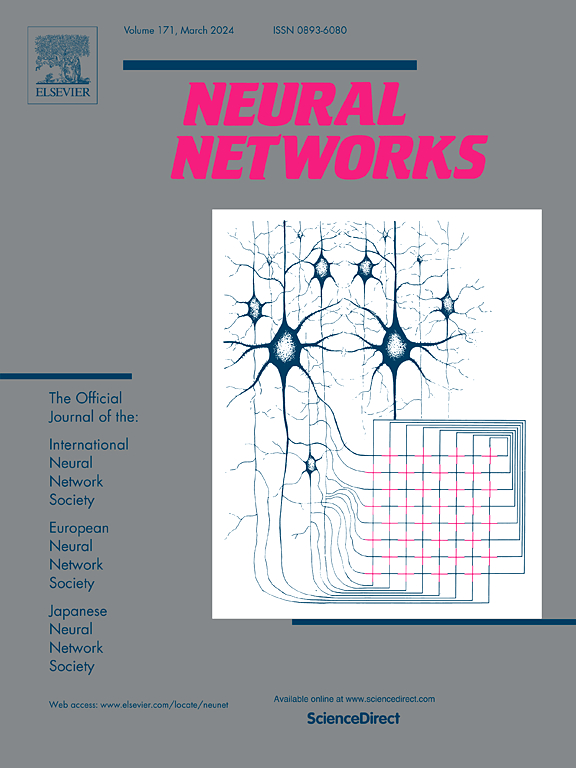神经形态处理器上基于事件的光流:基于激活稀疏化的ANN与SNN比较
IF 6
1区 计算机科学
Q1 COMPUTER SCIENCE, ARTIFICIAL INTELLIGENCE
引用次数: 0
摘要
用于基于事件的光流的尖峰神经网络(SNN)据称比其对应的人工神经网络(ANN)更具计算效率,但文献中缺乏公平的比较。在这项工作中,我们基于激活稀疏化和神经形态处理器 SENECA,提出了基于事件的光流解决方案。SENECA 具有一种事件驱动处理机制,可以利用 ANN 激活和 SNN 峰值的稀疏性来加速这两种神经网络的推理。得益于我们新颖的稀疏化感知训练,ANN 和 SNN 具有相似的低激活/尖峰密度(∼5%)。在旨在推断平均时间和能耗的硬件在环实验中,SNN 的能耗为 44.9ms 和 927.0μJ,分别是 ANN 能耗的 62.5% 和 75.2%。我们发现,SNN 的效率较高归因于其较低的像素级尖峰密度(43.5% 对 66.5%),这就要求对神经元状态进行较少的内存访问操作。本文章由计算机程序翻译,如有差异,请以英文原文为准。
Event-based optical flow on neuromorphic processor: ANN vs. SNN comparison based on activation sparsification
Spiking neural networks (SNNs) for event-based optical flow are claimed to be computationally more efficient than their artificial neural networks (ANNs) counterparts, but a fair comparison is missing in the literature. In this work, we propose an event-based optical flow solution based on activation sparsification and a neuromorphic processor, SENECA. SENECA has an event-driven processing mechanism that can exploit the sparsity in ANN activations and SNN spikes to accelerate the inference of both types of neural networks. The ANN and the SNN for comparison have similar low activation/spike density (5%) thanks to our novel sparsification-aware training. In the hardware-in-loop experiments designed to deduce the average time and energy consumption, the SNN consumes 44.9ms and 927.0J, which are 62.5% and 75.2% of the ANN’s consumption, respectively. We find that SNN’s higher efficiency is attributed to its lower pixel-wise spike density (43.5% vs. 66.5%) that requires fewer memory access operations for neuron states.
求助全文
通过发布文献求助,成功后即可免费获取论文全文。
去求助
来源期刊

Neural Networks
工程技术-计算机:人工智能
CiteScore
13.90
自引率
7.70%
发文量
425
审稿时长
67 days
期刊介绍:
Neural Networks is a platform that aims to foster an international community of scholars and practitioners interested in neural networks, deep learning, and other approaches to artificial intelligence and machine learning. Our journal invites submissions covering various aspects of neural networks research, from computational neuroscience and cognitive modeling to mathematical analyses and engineering applications. By providing a forum for interdisciplinary discussions between biology and technology, we aim to encourage the development of biologically-inspired artificial intelligence.
 求助内容:
求助内容: 应助结果提醒方式:
应助结果提醒方式:


